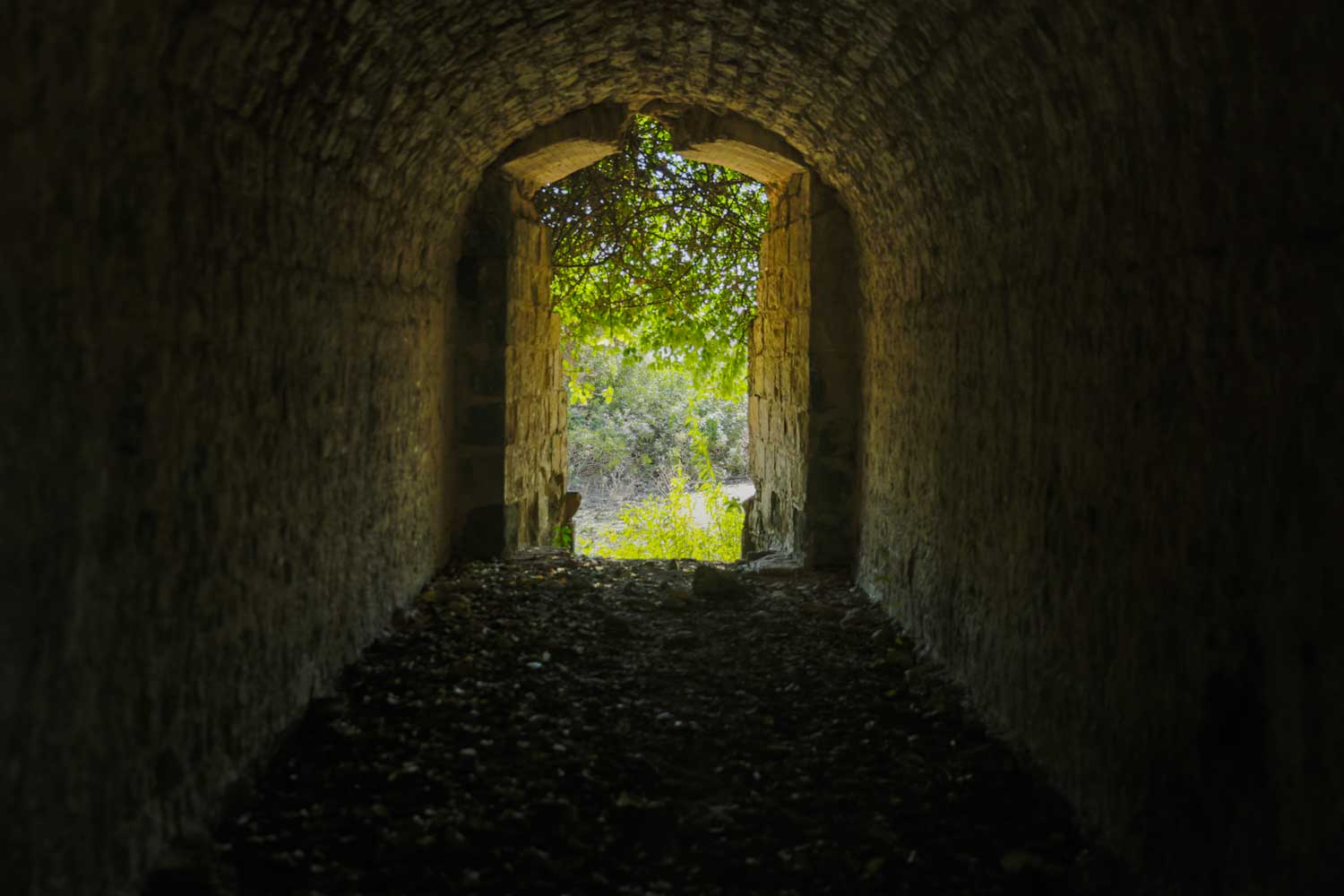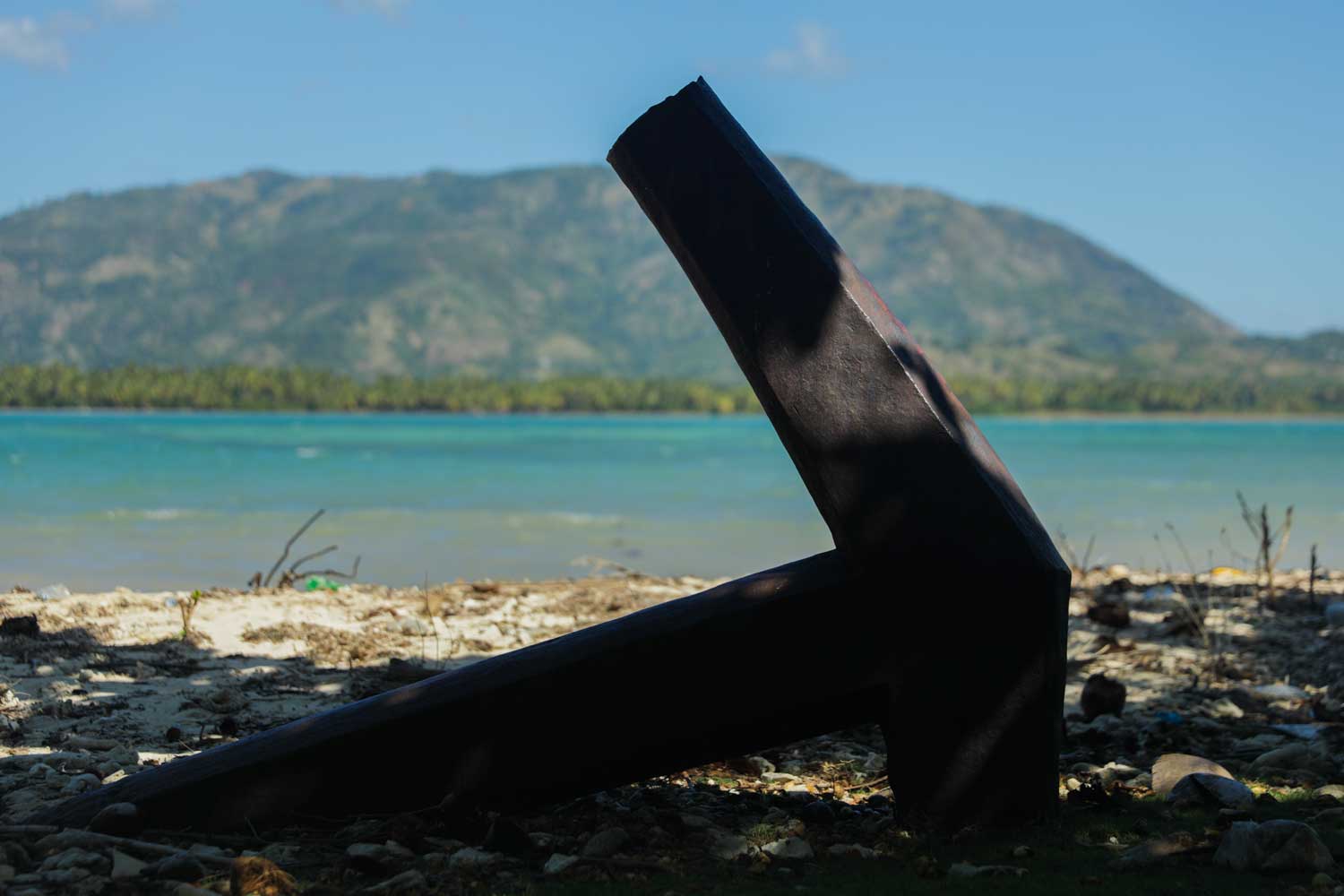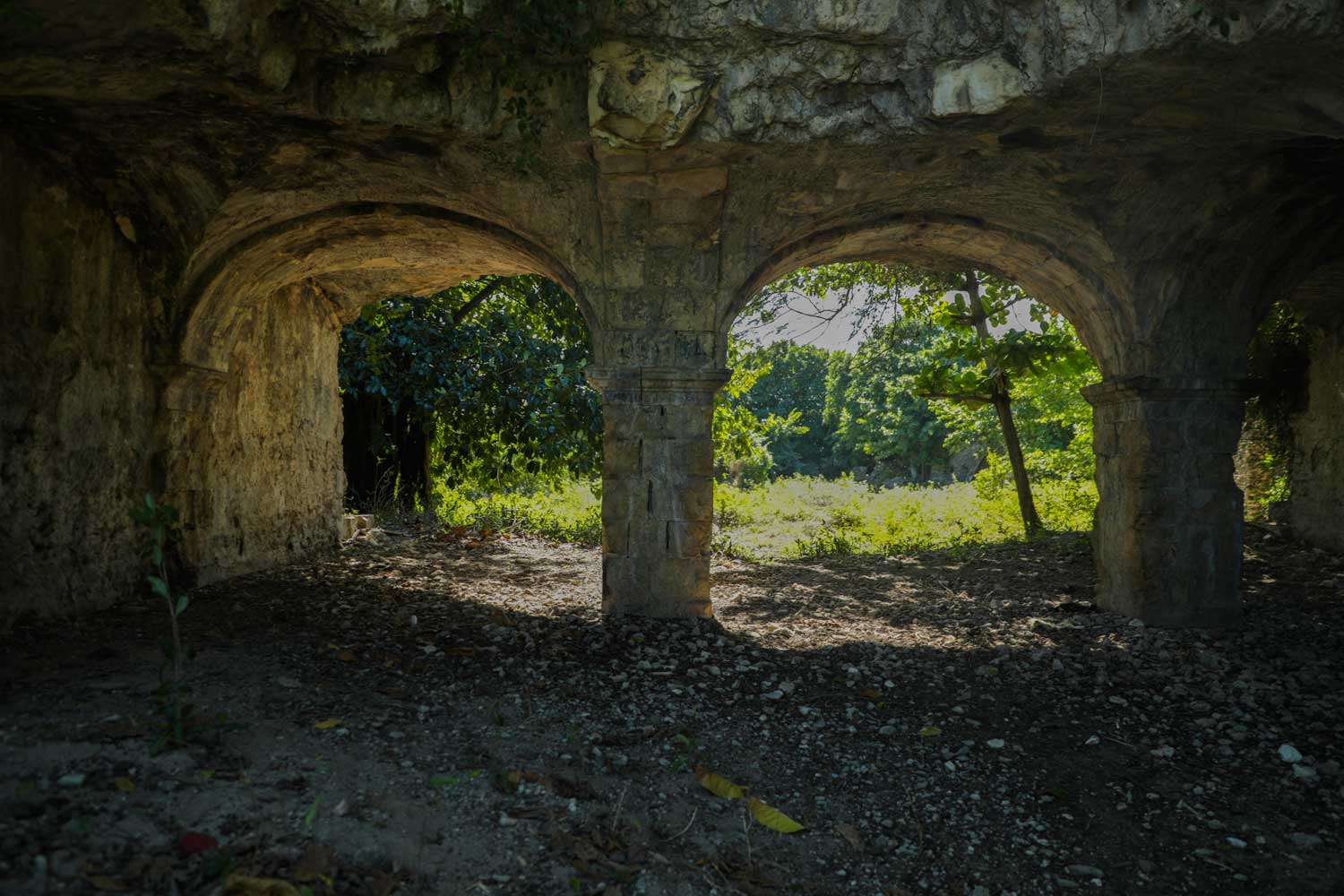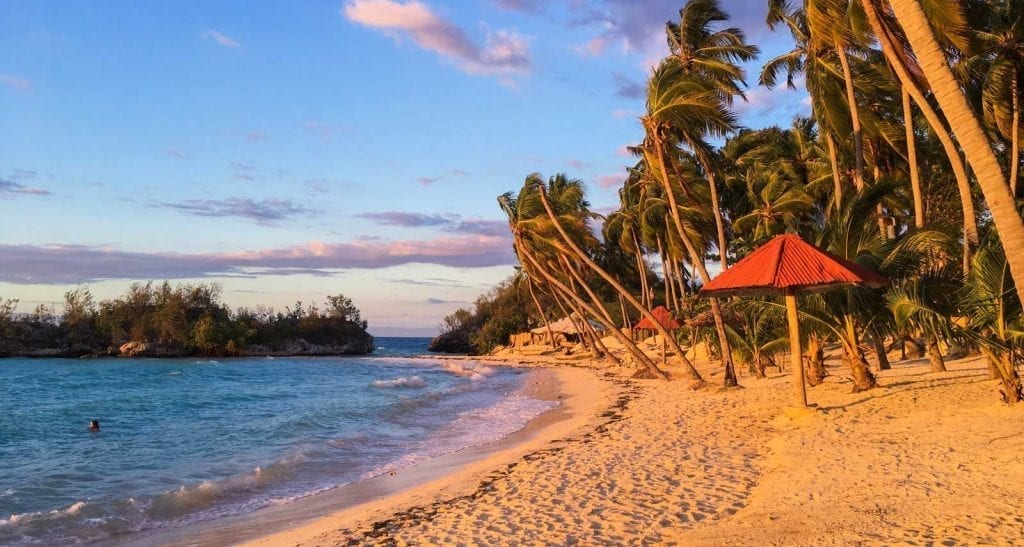Destinations
Explore the enchanting ruins of Fort Saint-Louis
Fort Saint-Louis, Haiti
Photo: Mikkel Ulriksen
A microcosm of Haitian history
The overgrown ruins of this 300 year-old French-built fort will enchant visitors for hours (and archaeologists for days), but to get there you’ll need to hire a boat.
Fort Saint-Louis stands on an islet in the Bay of St Louis, and is accessible via a short boat ride from Fort de Olivier, a fortress on the nearby peninsula of Saint Louis du Sud. Constructed at the same time, these two forts are often called ‘sisters,’ and are two of many strategically dotted along the coastline.
Just outside the seaside fortress, an abandoned shipwreck peeks up from underwater. For locals, this shipwreck is a microcosm of Haitian history. Across the country, relics of more dangerous times dot the landscape, their defences now serving to preserve cultural memories instead of material treasure, and changing over time as the years and the tropical storms assert their strength.
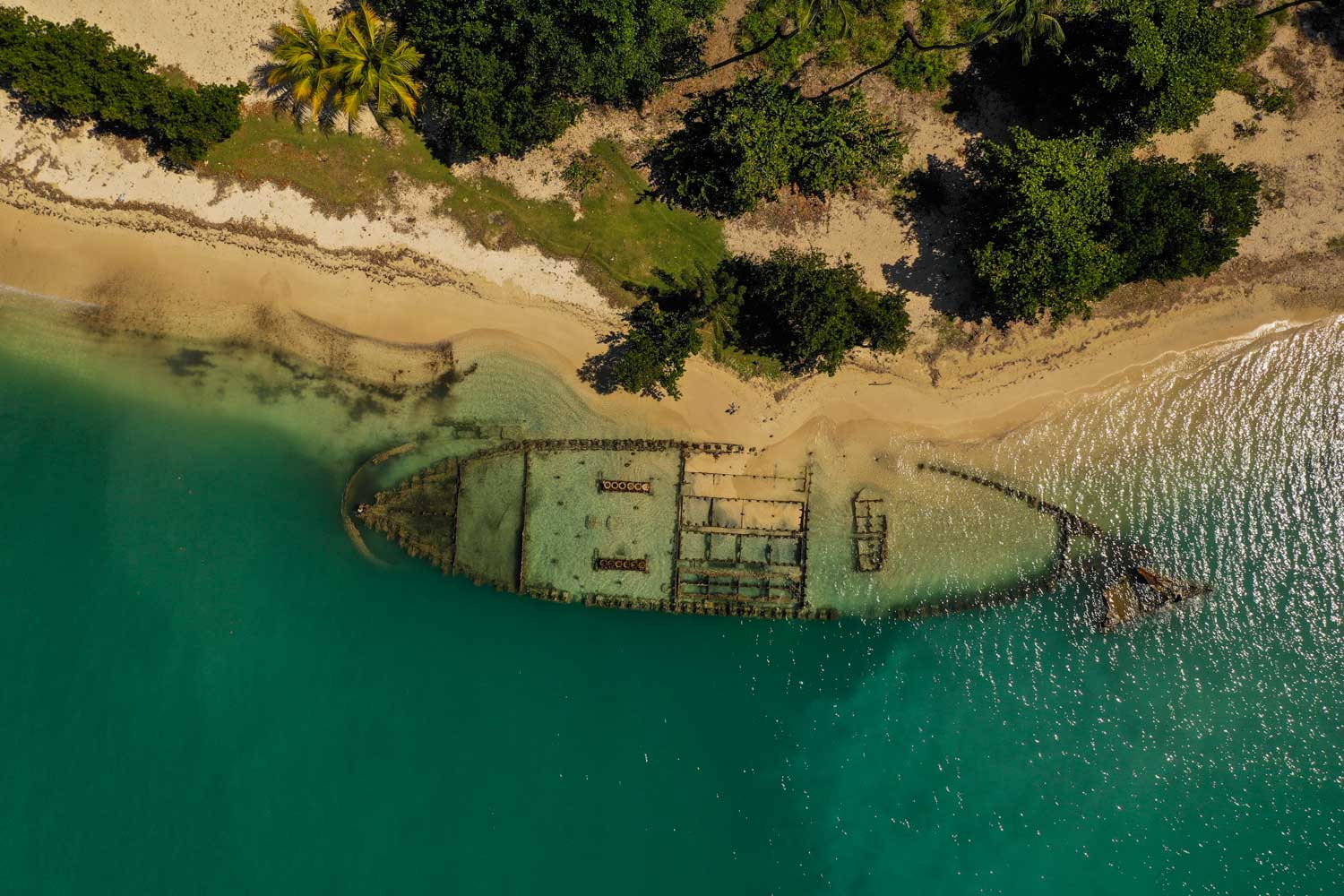
Abandoned shipwreck at Fort Saint-Louis
Photo: Mikkel Ulriksen
The extensive ruins of modern-day Fort Saint-Louis rise steeply from a craggy islet, the curtain wall of stone now thickly overgrown with vines and trees that blow in the tropic coastal breeze. After three hundred years of equatorial sunshine, sea salt and hurricanes, the outline of the fort is in remarkably good condition, and it’s still possible to walk through its many chambers and admire the original carved features set into the outer walls. You can still walk through some of the caves originally networked into the fortress.
Walking under the arches of the structure of the fort with branches and lianas hanging left and right feels surreal; it is almost as though you are one of the shift guards, waiting for the British to invade at any moment. Although severely weathered, the fort feels as towering and as imposing as it must have been three centuries ago.
Fort Saint-Louis
Photo: Mikkel Ulriksen
Built in 1702 by French occupiers, Fort Saint-Louis was designed to defend the Haitian territory against their colonial competitors - namely the British Empire. In 1748, less than fifty years later, the was captured by the British. As a result, it's now known as Fort des Anglais by many locals.
The southern coastline of Haiti was hotly contested in the seventeenth and eighteenth centuries as a foothold from which to defend the country’s riches. Although modern Haiti is known for its pristine beaches, colonial-era Haiti made a name for itself in European cities through the high-quality goods brought back by traders returning from its shores. Fort Saint-Louis was built just five years after the French and Spanish divided up the island of Hispaniola into two separate countries - Dominican Republic on the East and Haiti on the West.

Boat to Fort Saint-Louis
Photo: Franck Fontain
Getting there
Get the most out of your visit
Tour guides, who often live nearby in Saint Louis du Sud, or in the areas surrounding Fort des Oliviers, are always ready to provide their services by accompanying visitors and talking them through the history of the fort and the features that have stood the test of time.
Today, Fort Saint-Louis stands as a testament to a period in time and a state of mind that permeate the way modern Haitians understand and process their history.
Walking through the fort with someone who lives the complexity of that history is the best way to gain a nuanced understanding of what this beautiful ruin means.
Find Fort Saint-Louis-du-Sud
External Links
Categories
Tags
Share
Find Fort Saint-Louis
External Links
Categories
Tags
Share
4 reasons why Haiti is an adventure
Travellers exploring the Kaskad Pichon waterfalls, Haiti
Photo: Frank Fontain
Explore Haiti's history and heritage
10 Years after the Earthquake in Haiti
For Haitians, and many people watching from around the world,
Krik-krak! – The Haitian Tradition of Storytelling
What is krik-krak? How does storytelling connect Haitians to African
Visit a museum dedicated to Vodou
A visit to the Bureau of Ethnology, a museum dedicated
Soup Joumou – the taste of freedom
This once-forbidden stew now symbolises independence. Find out what makes
Your Ultimate Guide to Carnival in Haiti
Unleash your inner party spirit with our ultimate guide to
Meet the Colorful Characters From the Jacmel Carnival
Discover the unique universe of costumes at the Jacmel Carnival,
The Peabody House – A Gingerbread Palace
The delightful Peabody House is Haiti’s most famous example of
How Haitian Are You? Try This Cultural Quiz!
This quiz is a fun challenge for Haitians and non-Haitians
Explore Haiti’s Contemporary Art Scene at Villa Kalewès
Kalewès is creole for “hangout” and Villa Kalewès, a Petion-Ville
Subscribe to our newsletter
Get more travel inspiration, tips and exclusive offers sent straight to your inbox

